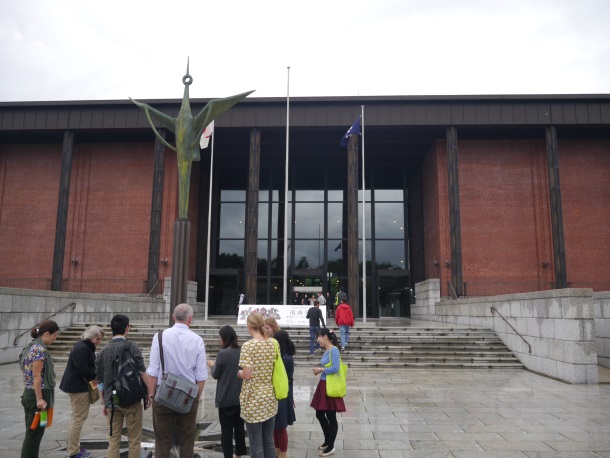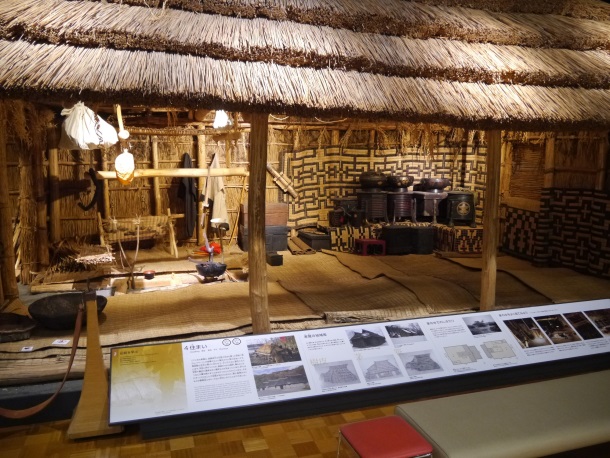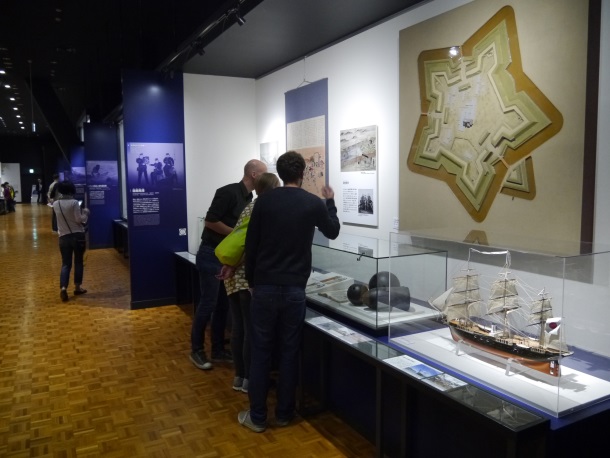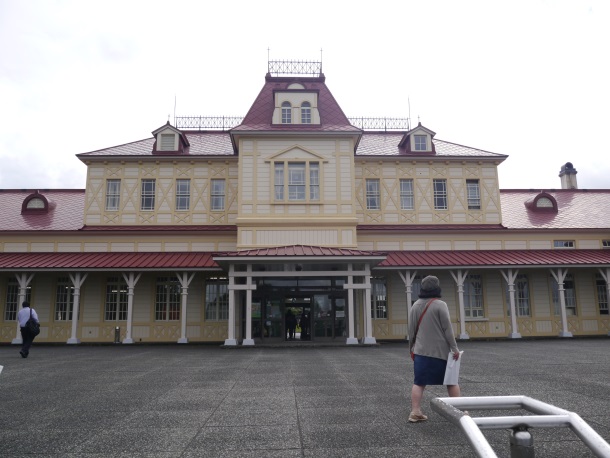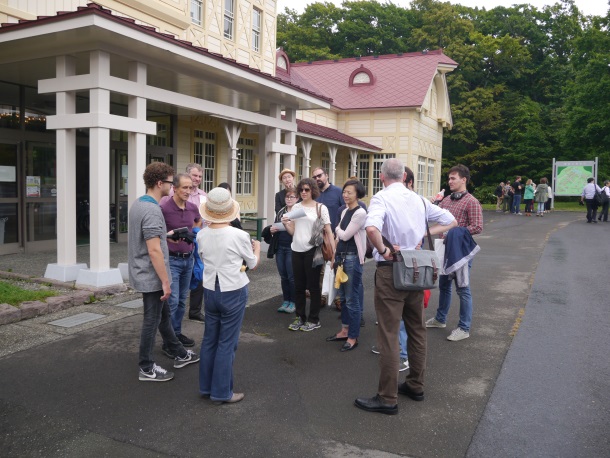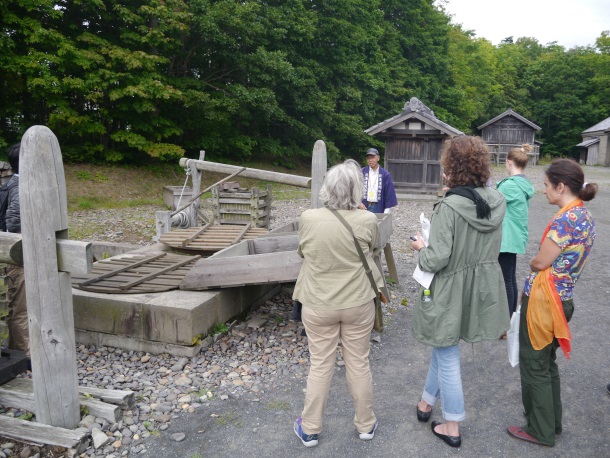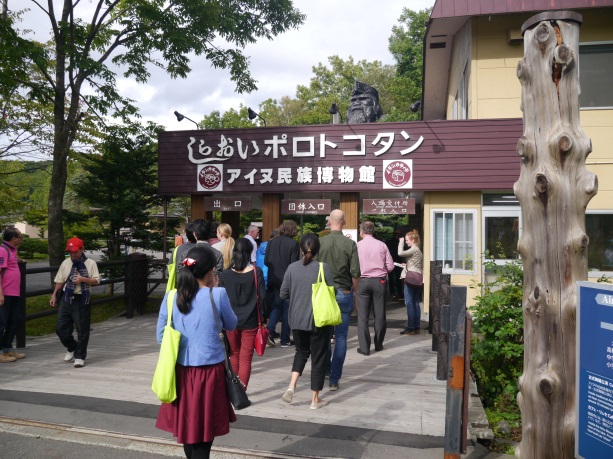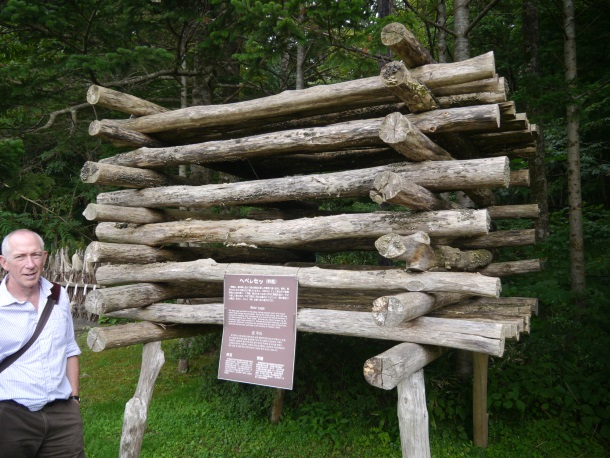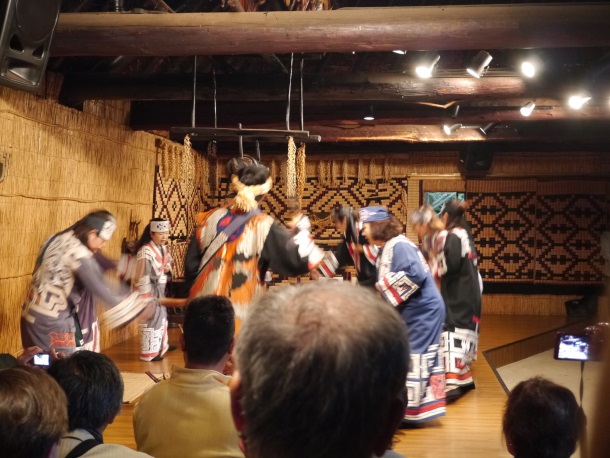2015.10.01
第1回サマースクール(最終日)The GHC Summer School Report (Excursion)
9月12日(土):エクスカーション
この日は、朝、札幌市内を出発し、北海道博物館、北海道開拓の村、さらにアイヌ民族博物館を見学したのちに、宿泊地である登別まで移動した。
北海道博物館は、北海道開拓記念館を前身とする総合博物館であり、今回見学した常設展は、先史時代を含めた北海道の歴史、アイヌを中心とする民俗文化、さらに北海道固有の動植物など自然生態などを主な内容とするものであった。「開拓」記念館を前身とはしているが、その展示内容には開拓者以外の視点から見たものも多く含まれている。
今回のサマースクール参加者の研究テーマは、植民地化、民族のアイデンティティ形成、貨幣流通などの経済史、建築史など、一言で歴史学といっても非常に多岐にわたっている。そのためか、上述の幅広い展示内容のどの箇所に特に興味を持つか、顕著な個人差が見られた。(たとえば、植民地化について研究している参加者は、北海道開拓に関する展示を特に念入りに見学する、といった傾向があった。)
北海道開拓の村は、50ヘクタールほどの敷地内に50棟以上の北海道の歴史的建造物を移築・再現した野外博物館である。役場や駅舎などの公共建造物、飲食店舗や新聞社社屋、官舎などの都市住宅、漁村や農村の民家・納屋など、多様な建造物が集まっており、それぞれ市街地群、漁村群、農村群、山村群という区画に分けて展示・公開されている。
ここでも、北海道博物館と同様、どの建造物や展示に特に興味を持つかは、参加者それぞれの関心や研究テーマに大きく依存する模様であった。2グループに分かれてガイドツアー(英語)に参加したものの、一部の参加者については、途中から自身の関心に従って個別に見学を行う、といった動きも見られた。
アイヌ民族博物館は、アイヌ文化の伝承・保存、調査・研究、教育普及などを総合的に行うための社会教育施設である。アイヌなどの北方少数民族に関する資料や文物を収蔵・展示するほか、屋外にはアイヌの伝統的な住居であるチセが復元され、アイヌの伝統集落が再現された野外博物館となっている。また、展示以外にも、アイヌの古式舞踊や楽器演奏などの公演も実施している。
参加者らは、各種の展示・公演を興味深く見学しており、少数民族の文化に対する関心がうかがえた。ある参加者が、アイヌのイオマンテという熊送り儀礼について、動物愛護の観点からやや否定的な発言をしており、現在の西洋における価値観と、アイヌの伝統文化との差異が感じられる場面もあった。 (文責:福原 弘太郎)
September 12 (Saturday): Excursion
This morning, the group left Sapporo City and toured the Hokkaido Museum, the Historical Village of Hokkaido, and the Ainu Museum. Then, they traveled to Noboribetsu, where they stayed for the night.
At the Hokkaido Museum, a comprehensive museum formerly called the Historical Museum of Hokkaido, the group viewed a permanent exhibition that presents the history of Hokkaido back to prehistoric times, its ethnoculture (centered on the Ainu people), and natural ecosystems that include Hokkaido’s characteristic plants and animals. Its predecessor—the Historical Museum of Hokkaido—focused on the development of Hokkaido by the Japanese, but it also presented many exhibits from perspectives other than those of the pioneers who developed the region. Participants in the GHC First Summer School researched themes—although defined simply as “History”—that actually spanned many topics including colonization, formation of ethnic identity, economic history (including the circulation of currency), and the history of architecture. Perhaps for this reason, the interests of participants differed for this broad range of exhibits. For example, participants researching colonization tended to be particularly interested in viewing exhibits about the development of Hokkaido.
The Historical Village of Hokkaido is an outdoor museum that was created by moving and reconstructing more than 50 of Hokkaido’s historical buildings on a site covering almost 50 hectares. It brings together a range of structures including public buildings (e.g., town hall and train station), a restaurant, a newspaper office, an official residence and other urban housing, and fishing and farming village homes and barns. Public exhibitions are presented in the Town, Fishing Village, Farm Village, and Mountain Village sections of the site.
As noted on the visit to the Hokkaido Museum, participants’ interests in buildings and exhibits varied greatly according to each person’s preferences and research theme. Although they were divided into two guided (English) tours, some participants were seen leaving their groups to tour the village individually.
The Ainu Museum is a public educational facility intended to contribute comprehensively to the transmission, preservation, survey, study, and spread of knowledge regarding the Ainu culture. In addition to storing and exhibiting documents and artifacts concerning the Ainu people and other northern ethnic minorities, traditional houses of the Ainu called chise have been reconstructed in an outdoor museum that restores a traditional Ainu village. Along with its exhibits, the museum also presents performances of ritual dances and music of the Ainu.
Participants observed the various exhibits and performances with great interest, revealing their concern with the culture of ethnic minorities. Some conflicts between the present values of the Western world and traditional culture of the Ainu were observed; for example, some members of the group reacted to the Ainu custom of iomante (killing a bear as a ritual or sacrifice), with negative comments from the point of view regarding the protection of animals. (FUKUHARA Kotaro)









